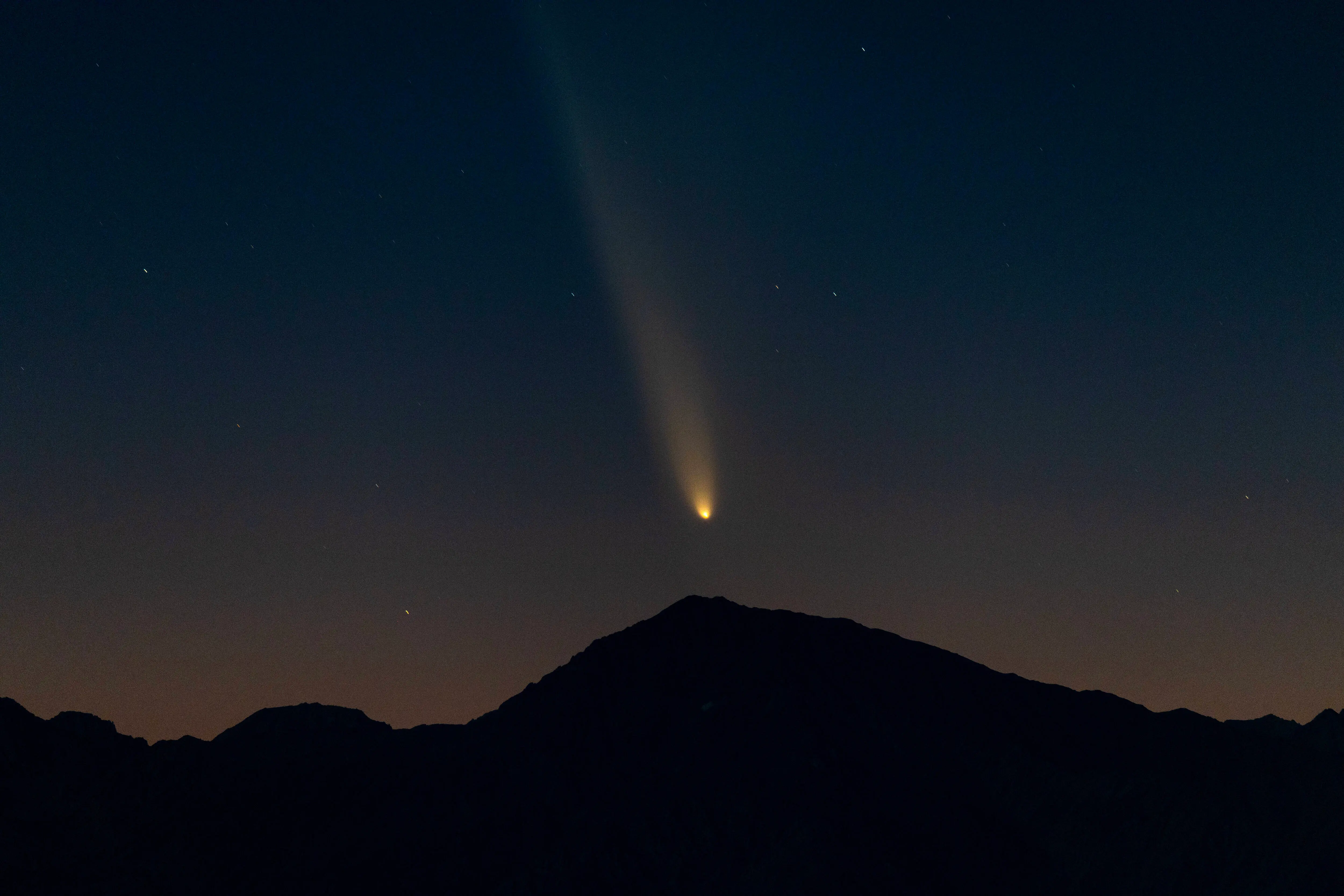3I/Atlas continues to surprise scientists after changing color for the third time since entering our solar system
-
 BIG PINE, CALIFORNIA - OCTOBER 12: Comet Tsuchinshan-ATLAS appears over the Eastern Sierra mountains as it transitions into the evening sky shortly after sunset, as seen from the Ancient Bristlecone Pine Forest area, on October 12, 2024 near Big Pine, California. The coma, or comet head, measures approximately 130,000 miles (209,000 kilometers) in diameter and the tail stretches out for about 18 million miles (29 million km). The comet will not return for another 80,000 years. (Photo by David McNew/Getty Images)
BIG PINE, CALIFORNIA - OCTOBER 12: Comet Tsuchinshan-ATLAS appears over the Eastern Sierra mountains as it transitions into the evening sky shortly after sunset, as seen from the Ancient Bristlecone Pine Forest area, on October 12, 2024 near Big Pine, California. The coma, or comet head, measures approximately 130,000 miles (209,000 kilometers) in diameter and the tail stretches out for about 18 million miles (29 million km). The comet will not return for another 80,000 years. (Photo by David McNew/Getty Images)The mysterious space object 3I/Atlas is once again surprising scientists. Astronomers say the object has changed color for the third time since it entered our solar system. The change has sparked new questions about what the object is made of and how it behaves in space.
A rare visitor from another star
3I/Atlas is not from our solar system. It came from another star system, which makes it an interstellar object. This means it’s just passing through before continuing its journey into deep space.
It is the third known interstellar object ever found — after ‘Oumuamua in 2017 and 2I/Borisov in 2019.
Astronomers first spotted 3I/Atlas earlier this year using the Pan-STARRS telescope in Hawaii. Since then, observatories around the world have been watching it closely.
Because it’s moving very fast and isn’t trapped by the Sun’s gravity, 3I/Atlas will not stay in our solar system forever. It will eventually move away and disappear from view.
Why the color keeps changing
Scientists have noticed that the object’s color keeps shifting. At first, it looked green, then it turned blue-white, and now it appears to be reddish.
Experts think these color changes are caused by sunlight heating the surface of the object. When sunlight hits materials like ice, dust, or gas, they can react or break down, which changes how the object looks.
The green glow may have come from carbon gas, which is common in comets. The blue and red tones may appear as different gases and dust react while 3I/Atlas moves closer to the Sun.
What scientists are learning
Researchers say that studying 3I/Atlas helps them understand how objects from other star systems behave. It may also show what kinds of materials exist in space beyond our solar system.
By comparing how 3I/Atlas reacts to sunlight and heat with comets we already know, scientists can learn more about how planets and stars form elsewhere in the galaxy.
This is a rare opportunity for research
3I/Atlas gives scientists a rare chance to study something that doesn’t belong to our solar system. Telescopes in Hawaii, Chile, Japan, and the Canary Islands are tracking it carefully.
Researchers are measuring its brightness, movement, and surface reactions. They hope this will help them understand whether 3I/Atlas is more like a comet, an asteroid, or something entirely different.
Because the object is moving away quickly, astronomers have only a short time to observe it before it fades from view.
What’s next for 3I/Atlas
3I/Atlas will likely stay visible to large telescopes for a few more months. After that, it will move farther from the Sun and become too faint to see.
Even though scientists don’t fully understand why it keeps changing color, every new observation adds more clues about what this rare visitor is made of.
TOPICS: 3I/ATLAS, 1I/ʻOumuamua and 3I/ATLAS, 3I/ATLAS comet
- China’s Tianwen-1 Mars orbiter captures rare image of interstellar object 3I/ATLAS while researchers wait for NASA's HiRISE photos
- New images of interstellar object 3I/Atlas reveal it has no visible tail, scientists clarify after early confusion
- Congresswoman Anna Paulina Luna asks NASA to release unreleased 3I/ATLAS data amid growing mystery surrounding comet
- Fact check: Did Donald Trump really fire NASA Administrator Sean Duffy over the 3I/Atlas controversy?